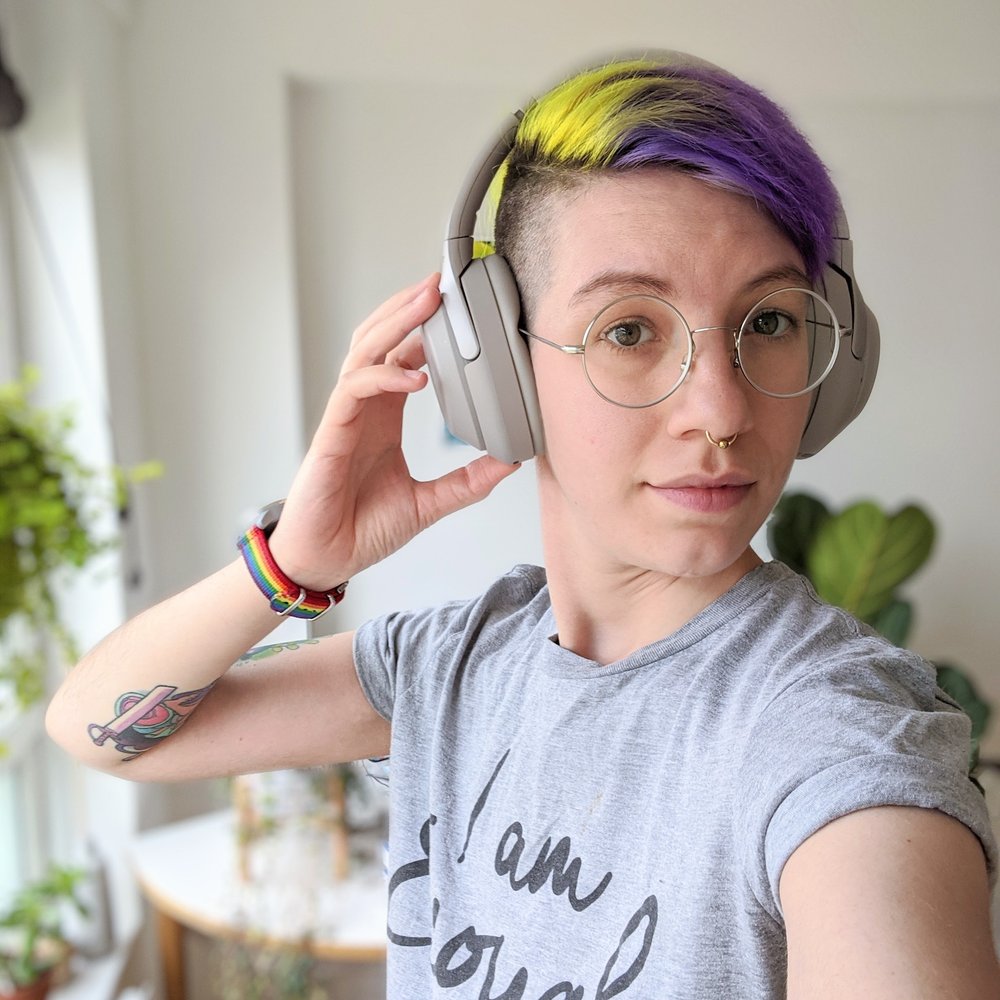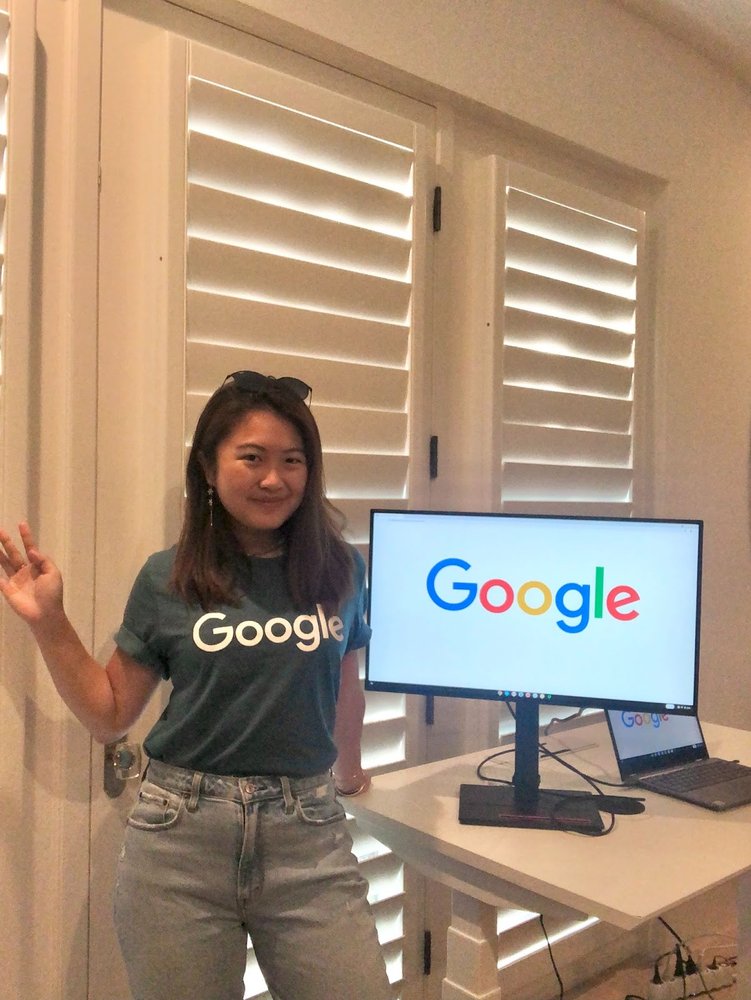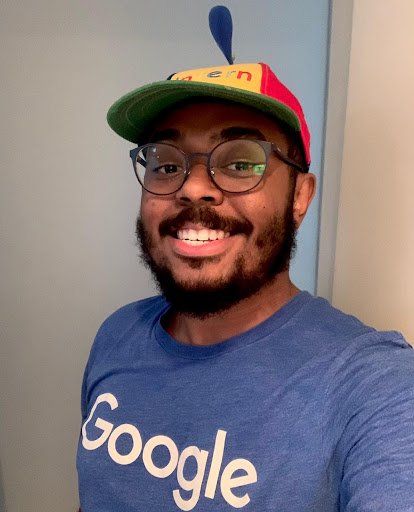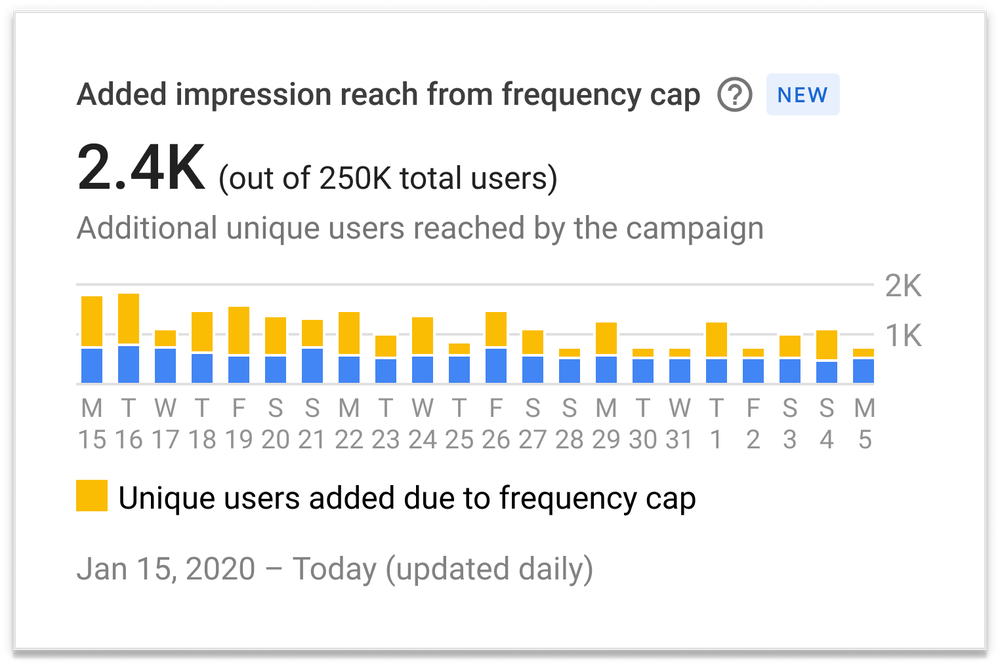The Chrome team is excited to announce the promotion of Chrome 93 to the Beta channel for Windows, Mac and Linux. Chrome 93.0.4577.18 contains our usual under-the-hood performance and stability tweaks, but there are also some cool new features to explore - please head to the Chromium blog to learn more!
Assign SSO profile to organizational units or groups with the new SAML Partial SSO beta
What’s changing
Who’s impacted
Why you’d use it
Getting started
- Admins: In the Admin console, navigate to Security > Settings > Set up single sign-on (SSO) with a third party iDP > Manage SSO Profile assignments. Visit the Help Center to learn more about assigning SSO profiles to organizational units or groups.
Rollout pace
- Rapid and Scheduled Release: Full rollout (1-3 days for feature availability) beginning on July 29, 2021
Availability
- Available to all Google Workspace and Cloud Identity customers
Resources
Source: Google Workspace Updates
Search within a folder in Google Drive on iOS
- Admins: There is no admin control for this feature.
- End users:
- Visit the Help Center to learn more about finding files in Google Drive on iOS.
- You’ll need to upgrade your Google Drive iOS app to version 4.2021.28202 or newer.
- Rapid Release and Scheduled Release domains: Gradual rollout (up to 15 days for feature visibility) starting on July 29, 2021
- Available to all Google Workspace customers, as well as G Suite Basic and Business customers
Source: Google Workspace Updates
Dev Channel Update for Desktop
The Dev channel has been updated to 93.0.4577.18 for Windows, Linux and Mac.
A partial list of changes is available in the log. Interested in switching release channels? Find out how. If you find a new issue, please let us know by filing a bug. The community help forum is also a great place to reach out for help or learn about common issues.
Prudhvikumar Bommana
Source: Google Chrome Releases
Google Apps Script & Google Ads scripts now support Content API v2.1 by default
If you currently have a Google Apps script or Google Ads script that uses Content API for Shopping v2, then we strongly recommend you migrate to v2.1. Please note that some methods and fields in v2 are no longer supported in v2.1 (for example
Inventory.set), so check the availability of methods and fields you use when you migrate. See the migration guide for more detail.If you need help implementing this change, please visit the Content API for Shopping forum.
Source: Google Ads Developer Blog
We’re here, we’re loud, we’re disabled and proud
I discovered Disability pride only after going to a youth Disability conference where I learned — for the first time — how it felt to be a part of the majority in the room. Now I try to create that experience for more disabled people.
In addition to my marketing role where I work on naming our products, I’m also a lead on Google’s Disability Alliance employee resource group that is made up of thousands of Googlers. As part of this community, we advocate, build awareness, and share advice around Disability topics with the goal of creating innovative and inclusive products, programs, and practices. We help people understand the larger Disability community’s principle of “Nothing about us without us”, and for any new product or program at Google, we encourage everyone to think about “Nothing without us at all.”
Through building community and sharing our stories, we show that we can live full lives not despite our disabilities, but because we have accepted those disabilities with love. For Disability Pride Month, Googlers are celebrating their disabilities as part of their identities. I’m honored to have Parinita Das and Lio Benz share their stories with us.

Parinita in her home in Hyderabad, India.
Parinita Das
(she/her)
You’ve been at Google for over 14 years. What’s been your favorite experience?
Parinita: The open and inclusive culture is the most valuable experience I’ve cherished at Google over the years. It has taught me to be accepting of myself and others, which in turn has helped me grow into a better person.
What is your perspective on Disability pride and culture?
Parinita: I’m an upper limb amputee and I’m able to go about my day independently with most activities using a bionic arm. Only about 3% of total amputations are upper limb amputations, and a functional prosthetic arm costs twice as much of a lower limb prosthesis.
While technology focuses on making life limitless for amputees, I’m disheartened to see the lack of sensitization in people. In my view, the biggest barrier for people with disabilities (PwD) is the lack of a psychologically safe world. I dream of a world where there’s more inclusion in our hearts so that we don’t perceive PwDs as broken. Once we provide PwDs with the psychological safety that they not only need but deserve, the sky can be the limit to what we can achieve.
In India, where I live, we first need to develop psychological safety for PwDs so more people will self-identify themselves as having disabilities. Once the community grows, there’ll be more opportunities to build allyship, support each other and show the world what we’re really capable of. On a personal level, I’m a relatively new amputee who’s still learning to navigate this world that’s not built for PwDs. I take pride in the fact of how far I’ve come on this journey, and I feel confident that life is limitless for me!

Lio in their home in London, United Kingdom.
Lio Benz
(they/them)
Tell us about your role at Google.
Lio: I’m an interaction designer on the Google Play team in London. What I enjoy most about my work is transforming complex data sets into easy-to-understand interactions and data visualizations that developers use to improve their apps and games for millions of people around the world.
What is your perspective on Disability pride and culture?
Lio: My autistic neurotype defines my experience of the world, and what I can and can’t do. In my community, we call this being ActuallyAutistic. In our society that doesn’t meet autistic needs, I am disabled and I take pride in my disability.
When I claimed the word “disabled”, people reacted with skepticism because I don’t “look” autistic to them. Being autistic is still stereotyped as white and cis-male, so people outside that stereotype have more difficulty receiving a diagnosis. For children who are diagnosed, Applied Behavior Analysis (ABA) therapy can be traumatising, especially when it involves electric shocks. As adults, many of us are detained in mental health hospitals, and only 22% of us are in ANY kind of employment. Yet a lot of research still focuses on finding causes and “cures” instead of how we can lead fulfilling lives. We need allies to listen to Actually Autistic voices and bring intersectional perspectives to the places where decisions are being made.
Source: The Official Google Blog
Partnering with the NSF on a research institute for AI to improve elderly care
From the early days of the internet to the development of the Human Genome Project, U.S. government-funded R&D has yielded remarkable progress for society, and today it is an important engine for AI research. That’s why, last year, we were proud to announce our partnership with the U.S. National Science Foundation (NSF) to provide $5M to support the establishment of national research institutes working in the area of Human-AI Interaction and Collaboration (HAIC). This partnership—which is part of a more than $300M NSF investment in AI Research Institutes—will create vibrant research centers across the U.S. to advance how people and AI collaborate through speech, text, gestures, and more. It also builds on our partnership with the NSF on next generation networks, and our AI research collaborations with U.S. federal agencies on weather modeling, robust AI systems, whale population monitoring, and more.
Today, we are delighted to share that NSF has selected the AI Institute for Collaborative Assistance and Responsive Interaction for Networked Groups (AI-CARING) led by Georgia Tech, along with Carnegie Mellon University, Oregon State University, and University of Massachusetts Lowell to receive the $20M AI Institute for HAIC grant. AI-CARING will improve collaboration and communication in elderly caregiving environments by developing AI systems that adjust to the evolving personal needs and behaviors of those requiring care. With our growing research presence in Atlanta, we’re excited to build on our rich history of collaboration with Georgia Tech and its partners in this effort—most recently supporting some of these universities' work to help vulnerable populations find important information on COVID-19 and monitoring and forecasting disease spread.
With a growing population of older adults in need of caregiving, AI systems can be useful in a variety of contexts, like conversational assistants, health sensing, and improving coordination across the care network. For example, AI can help existing voice assistants better understand people with speech impairments, and can be integrated in home bathrooms to make them more accessible. The AI-CARING Institute will develop assistive AI agents across these types of contexts to help those requiring caregiving to sustain their independence and improve their quality of life. Additionally, this research will be the product of interdisciplinary teams—with expertise across AI, geriatrics, behavioral sciences, and design—working to ensure that AI is deployed responsibly in this context, with human-centered principles in mind.
Congratulations to the recipient universities of the AI Institute awards and the faculty, listed below. We look forward to learning from the team’s research, sharing our resources and expertise, and building a collaboration to help older adults lead more independent lives and improve the quality of their care.
Recipient university institutions:
- Georgia Institute of Technology
- Carnegie Mellon University
- Oregon State University
- University of Massachusetts Lowell
Faculty:
- Sonia Chernova (Georgia Tech) - PI
- Elizabeth Mynatt (Georgia Tech) - Co-PI
- Reid Simmons (Carnegie Mellon University) - Co-PI
- Kagan Tumer (Oregon State University) - Co-PI
- Holly Yanco (University of Massachusetts Lowell) - Co-PI
Source: The Official Google Blog
Helping site owners manage consent in AdSense
Privacy regulations like the European General Data Protection Regulation (GDPR) and the California Consumer Privacy Act (CCPA) are an important part of privacy-first advertising. But navigating privacy regulations can be complex if you can’t dedicate resources to meet the varying regulatory requirements across the globe.
The process of consent management often entails:
Notifying site visitors on how their data is being used
Enabling site visitors to provide consent or manage their data preferences
Communicating those preferences to advertising partners, so that they’re respected
To help you gather and manage user consent for GDPR and opt-out requests for CCPA, we’ve launched new consent management features directly in AdSense Auto ads. These features offer an easy way for you to communicate with your site visitors, providing them an opportunity to manage their data and privacy preferences. This also gives you the ability to gather consent for advertising purposes, so you can continue to grow advertising revenue and fund your content.
Gather and manage consent for GDPR
AdSense’s consent management solution is integrated with the Interactive Advertising Bureau (IAB) Europe’s Transparency and Consent Framework (TCF) v2.1, which standardizes the process and offers common language for gathering consent under the GDPR and ePrivacy Directive. When an EEA or U.K. user visits your site from those regions, your GDPR consent message will display to give them options to manage their data, and their choices will be automatically respected by AdSense and communicated to your advertising partners.
Gather opt out requests for CCPA
AdSense also supports the IAB's CCPA Compliance Framework, which provides you with a standardized approach to manage opt-outs from users in this state. AdSense Auto ads detects when a user from California visits your site, shows them a CCPA opt out message, ensures their choice will be automatically respected by AdSense and makes the user’s choices available to other advertising partners you’ve integrated on the page.
Grow revenue in a privacy-focused way
AdSense makes the process of gathering and managing consent easy. It allows you to communicate with your users and give them more transparency and control over how their data is being used. This makes it possible for you to continue to fund your content with advertising in a privacy-first way.
The consent management solutions in AdSense are simple for publishers to use. As they’re already integrated into AdSense Auto ads, simply edit your site’s Auto ads settings, click “More features” and then turn on your consent messages. Of course, this feature is optional to use and you can work with any consent management platform of your choice.
As new privacy regulations arise, we’ll continue to evolve our consent management solutions to help partners navigate user privacy decisions in a transparent way. We remain committed to helping site owners earn money through their content and grow their digital businesses for the future in a privacy-first ecosystem. Watch this space for further updates in the coming months.
Please visit the AdSense help center to learn more.
Source: Inside AdSense
Google interns take on 2021
When I applied to be an intern at Google, I didn’t know what I wanted to do. But I knew what I was hoping for: a collaborative culture, to work on interesting new technology, and, of course, one of those colorful propeller hats.
Still, I had no idea what part of the company I should work in, and I was worried about completing an entire internship remotely from my bedroom. I eventually was placed on the Global Communications and Public Affairs team — a specialty that was new to me. All my anxieties disintegrated when I met the Googlers who guided me through the internship process. I was welcomed onto a team that didn’t expect me to have everything figured out. They just wanted to support me.
During my internship, I’ve been encouraged to ask questions and given the resources to explore what interests me. Google is focused on continuous learning, and its internships are no exception. I may spend my morning interviewing a team lead about a product launch, followed by a coffee chat to learn about new Search features, and finish my day strategizing for this blog post.
But my favorite part of my internship has been connecting with Googlers from all over the world and helping share their stories. This year, Google’s 3,500+ interns (who come from more than 400 universities and more than 40 countries) have been collaborating on and leading all kinds of meaningful projects. As we celebrate International Intern Day today, I spoke with a few members of my intern class about the work they’re doing at Google and what they’ve learned so far.
Making a real impact

Meet Sarah
Pittsburgh, Pennsylvania
As a PhD candidate studying human-computer interaction, Sarah is used to designing new ways for people to utilize technology. She has spent her internship researching how a device could be helpful to people with hearing loss who might lipread. As part of her work on the Hearing Accessibility team, she tested a bracelet that can translate audio into tactile vibrations, which can provide an added layer of communication in addition to lipreading.
New to the area of hearing accessibility, Sarah quickly dove into the existing research, studying sound processing, phonetics and what makes lipreading both difficult and useful.
“At the start of the internship I built a tool to help people practice with the devices,” Sarah says. “It also lets us run experiments with the devices remotely, and I’ve been really excited by what we’ve been able to learn with this tool over the last few weeks. It’s great to work on something that my teammates as well as our pilot users get value from.”
Work that’s never been done

Meet Lino
Berlin, Germany
Lino has spent his internship creating a central hub that helps direct Sales teams to relevant support resources and services. When he started, Lino wasn’t told to build a specific product. Instead, Lino’s team explained their problem and supported him while he worked on a solution. Through his project, he’s learned how to thrive in ambiguity.
“Many of the things we do at Google haven’t been done before,” Lino says. “There’s no manual. It can be challenging to not have a step-by-step guide to follow, but really creating something from the ground up has been a very exciting experience.”
Learning with others

Meet Dana
Los Angeles, California
Throughout her internship, Dana has been working with Google Video Partners to grow a new format for audio ads. She’s partnered with various Google engineers to explore ideas like expanding to new inventory and making ad content more engaging. Did I mention she’s only a little more than half way through her 12-week internship? While working, Dana’s also built relationships with her peers.
“Working virtually is nudging me to be more intentional about reaching out,” she says. “A highlight for me was when a team member organized a waffle-making event. Imagine 12 people on video call flipping waffles! It just made me so happy.”
Creating new opportunities

Meet João
São Paulo, Brazil
Balancing two projects, João worked as the technical point of contact for customers at Google Cloud Brazil, and analyzed team productivity at Google using AI. During his internship, he took advantage of Google’s career resources, earning two engineering certificates. The best part is that his time at Google isn’t over: Since João’s internship ended a few weeks ago, he accepted a full-time role.
“I'm very glad that my relationship with Google is only beginning,” João says. “It feels like every single contribution I made as an intern had an impact and it’s great to know there’s even more to come.”
Source: The Official Google Blog
New reach and frequency metrics in Display & Video 360
Earlier this week, we announced new ways to help you easily capture connected TV and audio streamers' attention and understand what drives them to become customers.
To deliver a consistent user experience across these new channels and more established ones, it’s critical to control the overall number of times people see your ads.
Effective cross-channel frequency management can also reduce budget waste and help you make every ad dollar count. On average, we found that customers see a 6% reach gain when managing frequency in Display & Video 360.
But beyond averages, we heard that you needed a personalized assessment of the impact of cross-channel frequency management solutions on a campaign-by-campaign basis. We’re introducing two new tools that help you appraise the benefits of your own cross-channel frequency management strategy on an ongoing basis and at no cost.
Quantify the reach impact of cross-channel frequency management
First, we’re adding a dedicated data visualization for each campaign that spans across channels and has a frequency goal set at the campaign level. The visualization shows how much reach was gained due to effective frequency management at the campaign level. You can also access the same information at the advertiser or at partner level by creating an offline report in the standard Display & Video 360 reporting.

Frequency management data visualization
Having a real-time view of reach gains gives you more precision in evaluating your campaign performance. It also lets you assess the value of managing your programmatic campaigns across channels in a consolidated way. This leaves you better armed to defend marketing budgets.
By measuring the actual reach gains that come from managing frequency across channels and eliminating unwanted impressions from our digital budgets, we can deliver better results for our clients.
With this new data visualization, you don’t need to set up an experiment with a test and control phase in order to see the impact of applying your frequency management strategy across media types. Display & Video 360 uses log data to automatically compare the reach obtained by a cross-channel campaign against the reach that you would have obtained with separate campaigns, each containing a single channel and its own frequency goal.
Measure the extra reach coming from Programmatic Guaranteed strategies
Display & Video 360 will now calculate for you the extra reach you get for each Programmatic Guaranteed deal using Display & Video 360's frequency management solutions. This new metric will help you get a better understanding of how Programmatic Guaranteed deals contribute to the incremental reach you get from applying frequency management across media.
We can now easily monitor that our frequency distribution remains optimal across Programmatic Guaranteed and the rest of our Display & Video 360 buys – and quantify associated reach gains.
This topline data point will be visible in a dashboard in the “My Inventory” tab. You’ll still be able to use Display & Video 360’s offline report to see budget savings reinvested and impressions passed due to frequency for each Programmatic Guaranteed deal.
Managing frequency without third-party cookies
We’re committed to building solutions that will let you maintain control over ad exposure in a way that respects user privacy even when third-party cookies and identifiers are missing. Since 2019, Display & Video 360’s cross-domain frequency management tools have been powered by machine learning technology. And recently, we’ve further evolved these models to enable advertisers to manage frequency on Firefox ETP and Microsoft Edge traffic. In the future, we’ll keep exploring innovative ways to protect users’ privacy while controlling users’ overexposure to ads and limiting media waste.
